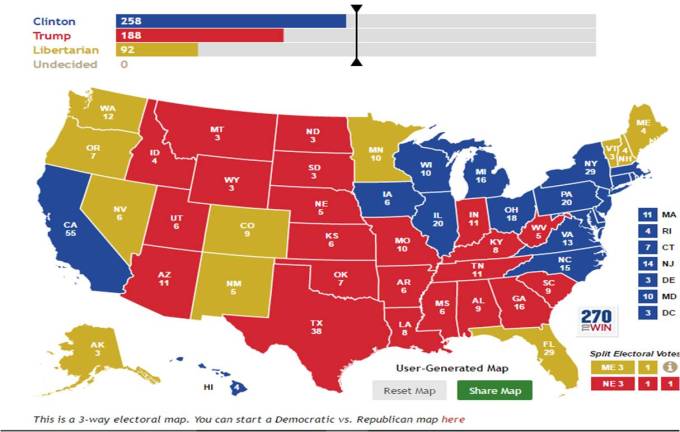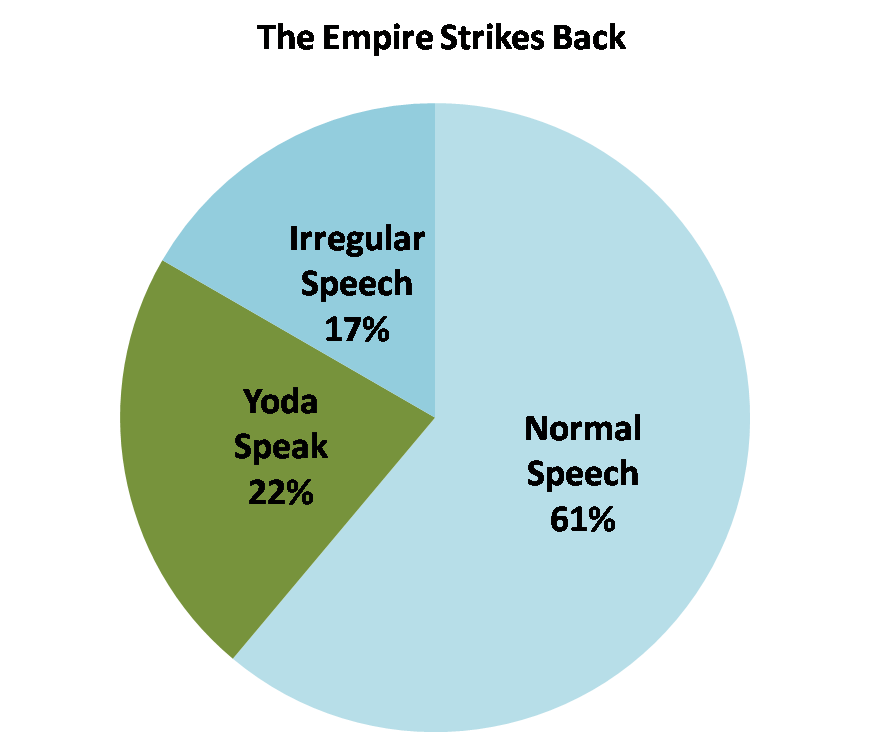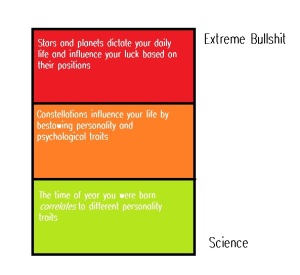As of right now, Donald Trump is the Republican nominee and will likely face Hillary Clinton in the general election. This has royally pissed off establishment Republicans, some of whom are even considering backing Hillary to avoid a Trump presidency. However, all hope is not lost for the one percent. The dislike for both Trump and Hillary may give them a back door to the presidency and a chance to elect their dream candidate. All they need to do is follow a simple plan, one that they’ve already tried this election cycle.
What’s this magic recipe for GOP success in the fall? It’s one part electoral college, one part Gary Johnson, and one part pure madness.
The Johnson
Johnson looks to be the Libertarian Party candidate this year, and already seems poised to outdo his 2012 performance, which got him 1% of the vote. While he’s not an ideal candidate (he openly admits to getting high on the campaign trail), he has the potential to pull in disaffected Republicans and some anti-war and pro-marijuana Bernie supporters. This might take him up to 5%, although some rare polls that include Johnson have showed him as high as 11% against Trump and Clinton.
The Electoral College
So how does a decent, but non-winning performance by Johnson help the GOP? The GOP doesn’t even want Johnson as their candidate, even if he may be preferable to Trump or Hillary. And even if they did want Johnson, a candidate polling between 5 and 15% means it’s unlikely he’ll be able to win any states, much less a majority of the electoral college against Trump and Clinton. Speaking of which, what happens if nobody gets a majority in the electoral college? Oh, that’s right, the Republican-controlled House chooses the president (you see where this is going?). The voting is a little different, with each state delegation voting en bloc instead of individual members, but with the GOP controlling 32 states, it has a firm grasp.
The House is bound by the Twelfth Amendment to select from the three candidates that received the most electoral votes. A candidate must receive a majority of the House votes, or the vote must take place again. Also, at least two thirds of the states must be present for each vote. In this scenario, they would either choose Trump, Clinton, or Johnson. The Democratic states would vote for Clinton and she’d fall short of a majority. Now, the remaining 32 GOP controlled states have to decide between Trump and Johnson. What if they’re split?
The Madness
If the House cannot decide on the president in time for the inauguration, then things get weird, or um weirder. While the House has been fighting it out, the Senate was also assigned the work of choosing the Vice President. They’re only allowed to choose from the top two candidates, which I assume will be Trump’s choice or Clinton’s choice. If the House can’t decide, then the Senate’s pick for VP becomes president. Since the Senate can only choose from the top two candidates, it’s pretty easy to get a majority. But what if they don’t? What if the Senate declares that they will not vote on a VP until the House chooses the president? What if the GOP decides to simply not vote, as they’ve done with Merrick Garland? Well, why the hell would they do that?
Because if they do that, then the Speaker of the House, Paul Ryan, becomes president. He then holds that position until either the House or the Senate select a new president or VP-turned-president.
How might this happen?
First, Johnson doesn’t need to win, he just needs to split the electoral votes. Few things seem certain in this election, but I think it’s a safe bet to say that Trump will win the South with some exceptions and Clinton will win the Northeast and West Coast with some exceptions. Johnson might be poised to do well in states that rejected both Trump and Clinton in their party’s process. So far, this includes states like Wisconsin, Utah, Kansas, Maine, Minnesota, and Alaska. That’s a simple way of determining competitive states of course. The social conservatism of Utah and Kansas would make for some infertile soil for Johnson’s social liberalism. However, in this masterplan, the pro-Ryan crowd doesn’t need to convince the voters that Johnson is better, only that by voting for him, they can get their dream choice. If that sounds familiar, it’s because it’s the exact same strategy they tried to deny Trump the nomination. Rubio, Cruz, and Kasich all tried to coordinate their voters to deny Trump as many delegates as possible.

The above map presents a possible scenario. Johnson could do well in the Bernie bastion of northern New England, his home state of New Mexico, wild Colorado and Nevada, and perhaps the Northwest which may be quicker to embrace Johnson’s quirks. GOP megadonors who dislike Trump, like the Kochs, could also help Johnson by pouring money into competitive states.
A scenario in which everyone falls short of a majority shifts the decision to the House. The Democrats would not have enough votes to get Clinton elected, but if she receives the most electoral votes then they have no reason to capitulate. Similarly, representatives in states that went heavily Trump would be pressured (threatened) into not backing down if Trump receives more votes than Johnson. In this already highly partisan and polarized atmosphere, it’s easy to see no side backing down. So then, all the Senate has to do is wait, and wait, and wait.
Is this plan insane?
Yes.
In an election cycle with daily complaints about the system being rigged, using the rules this way would inflame society. There would be protests, there would be riots, the US Capitol would be on constant lockdown. Democracy would survive – the Constitution was designed to handle these situations, but the cynical use of the law would drain the faith of the people in the system.
More (less?) importantly, it’s difficult to pull off. Voters don’t like being coordinated, they like using their vote to express an opinion, not as a calculated political maneuver. The efforts against Trump had some success, but ultimately not enough to keep him from the nomination. The GOP would also need to exhibit extreme party discipline within a party that has lately been splitting at the seams. All in all, it requires a lot of planning, luck, and balls to pull off – and thus far, the GOP hasn’t been too good at planning.
Wait! There’s more madness
Remember that Paul Ryan only gets to be president until the House or Senate choose a new one. And when Ryan becomes president there will be a new House and Senate. The House looks like it will stay GOP controlled, and the state makeup looks like it will change even less. The Senate, on the other hand, looks like it might flip to the Democrats. If that happens, all hell breaks loose.
First, the Dems will move to elect Clinton’s VP, who, under the Twentieth Amendment, would serve until the House elects a president, which they would probably do to avoid the Senate’s Democratic pick. But what if the GOP feels risky and threatens to elect Trump if the Senate elects Clinton’s VP, who, let’s say is Julian Castro for the sake of comedy. Maybe threatened with a Trumpocalypse, the Senate Dems would back down. If that happens, then Congress basically just gets to write up its own rules on how to choose a president. From there, they can just pick Ryan or pretty much whoever they want. That person would, again act as president until the House or Senate chose someone else, thus creating a scenario in which the threat of Trump takes on the role of the nuclear arsenal in MAD.
It’s also worth noting that the Supreme Court would probably get involved at some point. I mean, compare the mess I describe here with what happened in 2000. How could the Court possibly stay out of it? Which brings up more madness.
What happens if the Court splits? Thanks to GOP obstruction, there will be a vacancy on the court, making such a split much more likely. It will all depend on the lower courts and issues involved, but it promises to be nothing short of an ergot-fueled Boschian nightmare. And through all that time, guess who gets to act as president? Paul “I don’t want to be president” Ryan. Well played sir. Well played.










